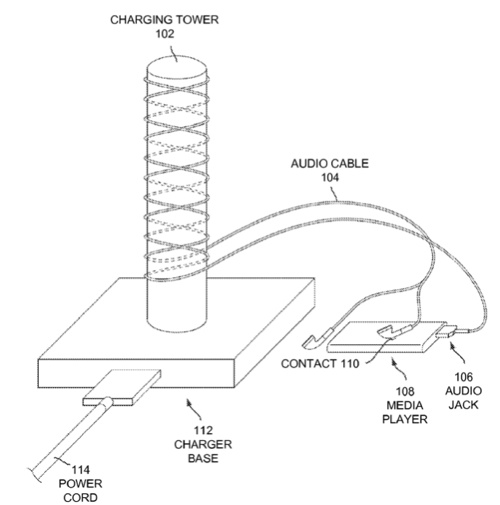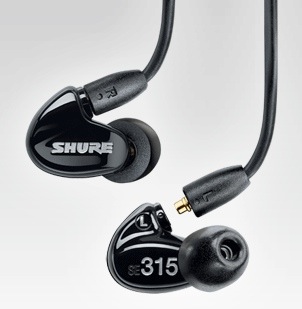Apple is investigating ways to create an inductive charging system for devices such as the iPhone, iPod touch and iPad, per a patent (number 20110188677) for “using an audio cable as an inductive charging coil” at the US Patent & Trademark Office.
According to Apple, the disclosed embodiments relate to a technique for inductively charging an electronic device. This technique involves winding an audio cable for the electronic device around a charging mechanism multiple times so that one or more conductors in the audio cable form an inductive receiving coil.
Next, a magnetic field is created through the charging mechanism to induce a current in the inductive receiving coil. Finally, the induced current in the inductive receiving coil is used to charge a rechargeable battery for the electronic device. The inventors are Fletcher R. Rothkopf, Anna-katrina Shedletsky, and Stephen Brian Lynch.
Here’s Apple’s background and summary of the invention: “Rechargeable batteries are presently used to provide power to a wide variety of portable electronic devices, including digital music players, cell phones, PDAs, laptop computers, and cordless power tools. These rechargeable batteries are typically charged through a direct conductive connection between a transformer, which is connected to either wall power or a car battery, and the portable electronic device.
“Inductive charging techniques, which operate without requiring direct conductive connections, have been developed for certain applications, such as electric toothbrushes, where the proximity to water makes a conductive connection impractical. An electric toothbrush can be recharged using a relatively small inductive receiving coil because it is typically placed in a charging stand for a long period of time (many hours) and is only used for a short period of time (about two minutes).
However, to inductively charge other types of electronic devices (such as portable media players or cell phones) at an acceptable rate, a significantly larger receiving coil is required. Providing this larger receiving coil involves either incorporating the larger receiving coil into the portable electronic device, which increases the size of the portable electronic device, or alternatively incorporating the larger receiving coil into a bulky attachment to the portable electronic device. Hence, what is needed is a technique for inductively charging portable electronic devices without the above-described problems.
“The disclosed embodiments relate to a technique for inductively charging an electronic device. This technique involves winding an audio cable for the electronic device around a charging mechanism multiple times so that one or more conductors in the audio cable form an inductive receiving coil. Next, a magnetic field is created through the charging mechanism to induce a current in the inductive receiving coil. Finally, the induced current in the inductive receiving coil is used to charge a rechargeable battery for the electronic device.
“In some embodiments, after winding the audio cable around the charging mechanism, the technique further involves electrically coupling a first contact, which is coupled to the one or more conductors in the audio cable, to a second contact associated with the electronic device to complete a circuit between the inductive receiving coil and the electronic device.
“In some embodiments, the second contact is located on a body of the electronic device. In further variation, the second contact comprises a conductive body of the electronic device.
“In some embodiments, the first contact is located on a first earphone (e.g., an earbud) which is attached to the audio cable. In a further variation, the first contact is conductive metal mesh screen that also protects a driver for the first earphone.
“In some embodiments, the second contact is located on a second earphone which is also attached to the audio cable. In a further variation, electrically coupling the first and second contacts involves electrically coupling the first and second contacts through an intervening conductor, wherein the intervening conductor is located in a housing which is configured to hold the first and second earphones.
“In some embodiments, the one or more conductors within the audio cable include multiple conductors which are coupled in series to form a single receiving coil having more windings than an audio cable with only a single conductor. In some embodiments, the audio cable comprises: a headphone cable; an earphone cable; or a microphone cable.”
— Dennis Sellers




